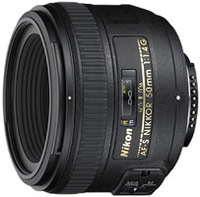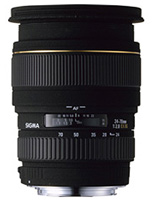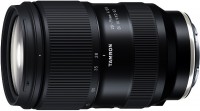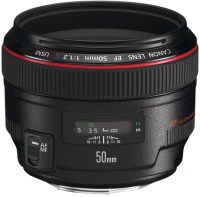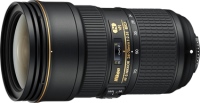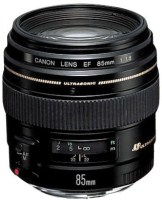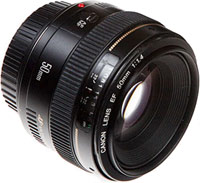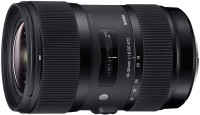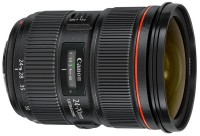Camera Lenses Carl Zeiss image stabilization
Choose Model camera and choose camera lens ↓ Apply | All Camera Lenses Advanced filters → |
You might be interested in
Articles, reviews, useful tips
All materials
Set of optics for cropped Sony mirrorless cameras: TOP 5 popular lenses
From these models you can assemble a complete set of optics for Sony mirrorless cameras from the “six thousand” league

5 high-end lenses for Canon full-frame mirrorless cameras
A complete set of five lenses for full frame mirrorless cameras with Canon RF mount

How does autofocus work?
When it comes to focusing on sharpness when taking photos and videos, automation can be fully relied on

The best lenses for Panasonic full-frame mirrorless cameras
Five cool lenses from which you can assemble a complete set of optics for Panasonic full-frame cameras

Fuji Lens Marking Secrets
The combination of symbols in the name of the object reveals its entire background

TOP 5 popular lenses for Micro 4/3 mirrorless cameras
A set of optics for Olympus and Panasonic mirrorless cameras with a Micro 4/3 image sensor
Camera Lenses: specifications, types
Lens type
General lens type. Note that this parameter is largely determined by the equivalent (not actual) focal length, but in the characteristics of optics, the actual value is most often indicated; see "Focal length" for more on this.
The type is not indicated for any optics, but only for models that have a pronounced specialization and clearly fit into a certain category. In addition to them, there are so-called universal lenses — see below about them. And specialized models can be of the following types:
— Fix. This category on our website includes almost all lenses that do not provide the ability to change the focal length. These can be wide-angle models, and optics with a long focal length, providing a high degree of magnification, and models with average values; the only exception is the ultra-wide-angle fisheye, which is a separate type (see below). Due to the simpler design, fixes are usually cheaper and more reliable than similar zoom models. Their main disadvantage is the actual constant focal length. Because of this, when working with fixes, you have to have your own lens for each type of shooting, and zooming in / out of the image is carried out solely by moving the camera closer / farther relative to the object being filmed (in professional jargon — “zoom with your feet”).
— Wide angle. Zoom lenses, the minimum value of which is up to 18 m...m inclusive, the maximum is up to 40 mm inclusive (both are in 35 mm equivalent). This provides a wide viewing angle with virtually no visible distortion (unlike ultra-wide-angle models, see below). "Wide angles" are often used for shooting landscapes, large objects, etc.; also, such a lens can be useful in tight conditions, where you need to capture the widest possible scene (for example, a large group of people), and the situation does not allow you to move far away.
— Ultra wide angle. Also, this type of lens is called fisheye, or "fisheye". Their equivalent focal length is up to 17 mm inclusive, and viewing angles can reach 180° and even more, which allows capturing a very large area of the surrounding space in one picture (for example, the sky around the entire circumference of the horizon). Such lenses have noticeable distortion in the resulting image: the centre of the frame looks closer than the edges, and straight lines that do not pass through the centre of the frame become crooked. Because of this, fisheye optics got their name: the view through it is similar to how a fish sees the ground from under the water. Most often, fisheyes have a fixed focal length, but there are also zoom lenses. Such lenses are used, in particular, to create panoramas, shooting in confined spaces, as well as to provide artistic effects.
— Tele. Lenses with a long focal length and, accordingly, a high degree of magnification, designed primarily for shooting at long distances. If we talk about specific numbers, then in our catalog telephoto lenses include models with a variable focal length, in which the lower limit of the focal length is at least 50 mm, and the upper limit is at least 200 mm. Such optics can be convenient, in particular, when shooting nature, sports competitions and mass events.
In addition to those described above, many lenses are produced that meet the criteria for several types at once or do not fit into any of them. Examples include, in particular, an intermediate option between wide-angle and telephoto lenses with a focal length of 24 to 55 mm, or a model with an extensive adjustment range like 28 – 200 mm, covering both of these types. Such lenses without specialization are called universal. In general, their scope is quite wide, and most of the optics supplied in the kit (kit) with SLR cameras belong to the mentioned “intermediate option”. However in terms of image quality, universal models are often inferior to specialized optics with a similar price; on the other hand, a set of several specialized lenses often costs more than a high-end "station wagon" with the same capabilities.
The type is not indicated for any optics, but only for models that have a pronounced specialization and clearly fit into a certain category. In addition to them, there are so-called universal lenses — see below about them. And specialized models can be of the following types:
— Fix. This category on our website includes almost all lenses that do not provide the ability to change the focal length. These can be wide-angle models, and optics with a long focal length, providing a high degree of magnification, and models with average values; the only exception is the ultra-wide-angle fisheye, which is a separate type (see below). Due to the simpler design, fixes are usually cheaper and more reliable than similar zoom models. Their main disadvantage is the actual constant focal length. Because of this, when working with fixes, you have to have your own lens for each type of shooting, and zooming in / out of the image is carried out solely by moving the camera closer / farther relative to the object being filmed (in professional jargon — “zoom with your feet”).
— Wide angle. Zoom lenses, the minimum value of which is up to 18 m...m inclusive, the maximum is up to 40 mm inclusive (both are in 35 mm equivalent). This provides a wide viewing angle with virtually no visible distortion (unlike ultra-wide-angle models, see below). "Wide angles" are often used for shooting landscapes, large objects, etc.; also, such a lens can be useful in tight conditions, where you need to capture the widest possible scene (for example, a large group of people), and the situation does not allow you to move far away.
— Ultra wide angle. Also, this type of lens is called fisheye, or "fisheye". Their equivalent focal length is up to 17 mm inclusive, and viewing angles can reach 180° and even more, which allows capturing a very large area of the surrounding space in one picture (for example, the sky around the entire circumference of the horizon). Such lenses have noticeable distortion in the resulting image: the centre of the frame looks closer than the edges, and straight lines that do not pass through the centre of the frame become crooked. Because of this, fisheye optics got their name: the view through it is similar to how a fish sees the ground from under the water. Most often, fisheyes have a fixed focal length, but there are also zoom lenses. Such lenses are used, in particular, to create panoramas, shooting in confined spaces, as well as to provide artistic effects.
— Tele. Lenses with a long focal length and, accordingly, a high degree of magnification, designed primarily for shooting at long distances. If we talk about specific numbers, then in our catalog telephoto lenses include models with a variable focal length, in which the lower limit of the focal length is at least 50 mm, and the upper limit is at least 200 mm. Such optics can be convenient, in particular, when shooting nature, sports competitions and mass events.
In addition to those described above, many lenses are produced that meet the criteria for several types at once or do not fit into any of them. Examples include, in particular, an intermediate option between wide-angle and telephoto lenses with a focal length of 24 to 55 mm, or a model with an extensive adjustment range like 28 – 200 mm, covering both of these types. Such lenses without specialization are called universal. In general, their scope is quite wide, and most of the optics supplied in the kit (kit) with SLR cameras belong to the mentioned “intermediate option”. However in terms of image quality, universal models are often inferior to specialized optics with a similar price; on the other hand, a set of several specialized lenses often costs more than a high-end "station wagon" with the same capabilities.
Main function
The general purpose is rather conditional, and in fact the use of optics is not limited to the claimed direction — it all depends on the skills and imagination of the photographer. However, information about the specialization can greatly facilitate the choice. Considering such original options as a cinema lens and a multifunctional.
— Architectural. Lenses designed primarily for shooting buildings. Most of these models are equipped with the Tilt-Shift system (see below). In this case, this function is intended to correct the perspective when shooting tall buildings. In a photograph taken with a normal lens, straight lines can turn out to be curved, which is unacceptable in cases where an accurate representation of the building in the picture is required. Using the Tilt-Shift system allows you to avoid this phenomenon and get a reliable image that does not require additional correction in a photo editor.
— Landscape. In this case, landscape lenses include short-focus (wide-angle) lenses, which, according to test results, provide good image sharpness. In other words, not all “wide-angles” are classified as landscapes, but only those that are actually capable of providing a clear, sharp image.
— Portrait. The hallmarks of a classic portrait lens are: first, the fixed focal le...ngth, which is usually over 50mm (35mm equiv.); secondly, high aperture (most often not lower than f / 2.8, although occasionally there are exceptions). This combination of characteristics allows you to shoot portraits with beautiful background blur, placing the camera at a fairly significant distance; the latter can be useful in studios where additional lighting equipment is used — it is advisable to install the camera behind lighting fixtures so that it does not give a shadow. Speaking of a fixed focal length, it is worth recalling that "fixes" are simpler, lighter and cheaper than zoom lenses, and the ability to adjust the magnification when shooting portraits is rarely required — most often you can completely get by with "zoom with your feet".
— Multifunctional. This direction includes lenses of a universal type (see above), offering the buyer a good value for money; in other words — multi-purpose models with good performance and at the same time relatively inexpensive (namely, "comparatively", the actual price can be quite high). When choosing models in this category, the quality of filming was evaluated according to the results of real tests.
— Film lens. The main feature of cinema lenses is the ability to fine-tune the aperture. The aperture can be closed / opened by 0.1 or even 0.01 mm, while in photo lenses the aperture setting step cannot be less than 1 mm. Additionally, in cinema lenses, aperture is expressed by a T-number, and in photographic lenses, an F-number is used. The operator can shoot multiple cinema lenses with the same aperture, without the need to change the lighting. And when using photo lenses with the same aperture, you often have to adjust the lighting for each optic separately. Cinema lenses are meant to be shot from a tripod, which is reflected in their design features and design — such models are usually larger and heavier than their counterparts for photography.
— Architectural. Lenses designed primarily for shooting buildings. Most of these models are equipped with the Tilt-Shift system (see below). In this case, this function is intended to correct the perspective when shooting tall buildings. In a photograph taken with a normal lens, straight lines can turn out to be curved, which is unacceptable in cases where an accurate representation of the building in the picture is required. Using the Tilt-Shift system allows you to avoid this phenomenon and get a reliable image that does not require additional correction in a photo editor.
— Landscape. In this case, landscape lenses include short-focus (wide-angle) lenses, which, according to test results, provide good image sharpness. In other words, not all “wide-angles” are classified as landscapes, but only those that are actually capable of providing a clear, sharp image.
— Portrait. The hallmarks of a classic portrait lens are: first, the fixed focal le...ngth, which is usually over 50mm (35mm equiv.); secondly, high aperture (most often not lower than f / 2.8, although occasionally there are exceptions). This combination of characteristics allows you to shoot portraits with beautiful background blur, placing the camera at a fairly significant distance; the latter can be useful in studios where additional lighting equipment is used — it is advisable to install the camera behind lighting fixtures so that it does not give a shadow. Speaking of a fixed focal length, it is worth recalling that "fixes" are simpler, lighter and cheaper than zoom lenses, and the ability to adjust the magnification when shooting portraits is rarely required — most often you can completely get by with "zoom with your feet".
— Multifunctional. This direction includes lenses of a universal type (see above), offering the buyer a good value for money; in other words — multi-purpose models with good performance and at the same time relatively inexpensive (namely, "comparatively", the actual price can be quite high). When choosing models in this category, the quality of filming was evaluated according to the results of real tests.
— Film lens. The main feature of cinema lenses is the ability to fine-tune the aperture. The aperture can be closed / opened by 0.1 or even 0.01 mm, while in photo lenses the aperture setting step cannot be less than 1 mm. Additionally, in cinema lenses, aperture is expressed by a T-number, and in photographic lenses, an F-number is used. The operator can shoot multiple cinema lenses with the same aperture, without the need to change the lighting. And when using photo lenses with the same aperture, you often have to adjust the lighting for each optic separately. Cinema lenses are meant to be shot from a tripod, which is reflected in their design features and design — such models are usually larger and heavier than their counterparts for photography.
Macro photography
Macro photography is the shooting of small objects (for example, flowers, insects, clockwork) from an extremely close distance, sometimes measured in millimetres. In this case, the image of the object occupies a large part of the frame (often almost the entire one), which gives the effect of a significant increase and makes it easy to see details in the picture that are usually almost invisible to the human eye. For such shooting, both lenses specially designed for it and universal models with the appropriate mode can be used.
DxOMark rating
The result shown by the lens in the DxOMark rating.
DxOMark is one of the most popular and authoritative resources for expert testing of photography devices. According to the test results, the lens receives a certain number of points; The more points, the higher the final score.
DxOMark is one of the most popular and authoritative resources for expert testing of photography devices. According to the test results, the lens receives a certain number of points; The more points, the higher the final score.
System
The system indicates which brand of cameras this lens is designed for. Manufacturers of photographic equipment often use original mounting systems in their cameras that are not always compatible with each other; therefore, for normal use, the lens must be originally designed for the corresponding system. At the same time, note that the actual compatibility will also depend on the mount (see "Bayonet (mount)"). At the same time, one system often includes several mounts (for example, Canon and Nikon); it happens vice versa — one mount can be used in several systems at once (for example, Micro 4/3 is used by both Olympus and Panasonic). In general, the optimal selection order is as follows: first clarify the compatibility of the lens with the system, then with a specific mount.
Also note that third-party manufacturers (who do not produce cameras and deal only with lenses) often produce models designed for several different systems at once. Such compatibility can be achieved both through a set of adapters (included in the package or sold separately), and through the release of different modifications of the same lens, differing only in mounts. The features of each such model should be specified separately.
Also note that third-party manufacturers (who do not produce cameras and deal only with lenses) often produce models designed for several different systems at once. Such compatibility can be achieved both through a set of adapters (included in the package or sold separately), and through the release of different modifications of the same lens, differing only in mounts. The features of each such model should be specified separately.
Mount
The type of mount used to connect the lens to the camera. The name comes from the English "bayonet", meaning "bayonet" and a bayonet-type connection. Bayonet mounts are used in the vast majority of modern digital cameras due to their reliability and ease of use.
Full compatibility of the lens with the camera is guaranteed only if the types of their mounts match. Some mounts are compatible with each other via adapters, but such a connection can limit the capabilities of the lens (for example, it will make it impossible to use autofocus) and is generally not considered optimal. It is worth considering that within the same system (see above) different mounts are often used, which are also incompatible with each other.
So, the manufacturer Canon has mounts EF-M, EF-S, EF, RF, RF-S. Leica has Leica M, Leica SL, Leica TL. Nikon has Nikon 1, Nikon F, Nikon Z in its arsenal. Pentax optics are equipped with Pentax 645, Pentax K, Pentax Q. Samsung uses NX-M and NX mounts. Sony models include Sony A and Sony E. In addition, there are other types of mounts on the market - both branded ( Fujifilm G, Fujifilm X, Hasselblad H, Sigma SA) and universal ( Four Thirds (4/3), Micro 4/3).
Note that there are lenses that are declared compatible with several mounts at once. This “omnivorousness” can be realized in different ways. For example, some models have a non-standard mount on the lens body, and compatibility with various mounts is ensured through the use of adapters; These adapters can be included in the delivery set or purchased separately. Another option is that the lens is available in several separate modifications, each for its own mount. These details should be clarified before purchasing.
Full compatibility of the lens with the camera is guaranteed only if the types of their mounts match. Some mounts are compatible with each other via adapters, but such a connection can limit the capabilities of the lens (for example, it will make it impossible to use autofocus) and is generally not considered optimal. It is worth considering that within the same system (see above) different mounts are often used, which are also incompatible with each other.
So, the manufacturer Canon has mounts EF-M, EF-S, EF, RF, RF-S. Leica has Leica M, Leica SL, Leica TL. Nikon has Nikon 1, Nikon F, Nikon Z in its arsenal. Pentax optics are equipped with Pentax 645, Pentax K, Pentax Q. Samsung uses NX-M and NX mounts. Sony models include Sony A and Sony E. In addition, there are other types of mounts on the market - both branded ( Fujifilm G, Fujifilm X, Hasselblad H, Sigma SA) and universal ( Four Thirds (4/3), Micro 4/3).
Note that there are lenses that are declared compatible with several mounts at once. This “omnivorousness” can be realized in different ways. For example, some models have a non-standard mount on the lens body, and compatibility with various mounts is ensured through the use of adapters; These adapters can be included in the delivery set or purchased separately. Another option is that the lens is available in several separate modifications, each for its own mount. These details should be clarified before purchasing.
Aperture
The type of aperture provided in the lens.
Aperture characterizes the ability of the lens to transmit light; for more on this, see "Aperture value". Types can be like this:
— Constant. As the name implies, in such optics, the aperture ratio is unchanged in any mode of use. This type includes all lenses with a fixed focal length (all models are fixed and partially fisheye, see "Type" for details); there are also models with a zoom lens that provide a constant aperture over the entire range of focal lengths, but they are a rare (and, usually, quite expensive) exception.
— Variable. This type of aperture is found exclusively in lenses with a variable focal length and is a kind of forced measure: with an increase in the focal length (due to the operation of the zoom lens) and a constant diameter of the active aperture, the aperture inevitably drops. The highest aperture value is achieved at the minimum focal length (and, accordingly, the minimum image magnification), the smallest — at the maximum. This format of work creates additional difficulties in setting up, so such optics are considered less perfect than zoom lenses with a constant aperture; on the other hand, it is noticeably simpler and cheaper.
Aperture characterizes the ability of the lens to transmit light; for more on this, see "Aperture value". Types can be like this:
— Constant. As the name implies, in such optics, the aperture ratio is unchanged in any mode of use. This type includes all lenses with a fixed focal length (all models are fixed and partially fisheye, see "Type" for details); there are also models with a zoom lens that provide a constant aperture over the entire range of focal lengths, but they are a rare (and, usually, quite expensive) exception.
— Variable. This type of aperture is found exclusively in lenses with a variable focal length and is a kind of forced measure: with an increase in the focal length (due to the operation of the zoom lens) and a constant diameter of the active aperture, the aperture inevitably drops. The highest aperture value is achieved at the minimum focal length (and, accordingly, the minimum image magnification), the smallest — at the maximum. This format of work creates additional difficulties in setting up, so such optics are considered less perfect than zoom lenses with a constant aperture; on the other hand, it is noticeably simpler and cheaper.
Aperture value
Lens aperture is a characteristic that determines how much the lens attenuates the light flux passing through it. It depends on two main characteristics — the diameter of the active aperture of the lens and the focal length — and in the classical form is written as the ratio of the first to the second, while the diameter of the active aperture is taken as a unit: for example, 1 / 2.8. Often, when recording the characteristics of a lens, the unit is generally omitted, such a record looks, for example, like this: f / 1.8 or f/2.0. At the same time, the larger the number in the denominator, the smaller the aperture value: f / 4.0 lenses will produce a darker image than models with f / 1.4 aperture.
Zoom lenses usually have different aperture values for different focal lengths. In this case, the characteristics indicate two aperture values, for the minimum and maximum focal lengths, respectively, for example: f / 4.5-5.6
The larger the aperture of the lens, the shorter shutter speeds it allows you to use when shooting. This is especially important when shooting fast-moving subjects, shooting in low light, etc. And if necessary, the light stream transmitted by the lens can be weakened using a diaphragm (see below).
Another point that directly depends on this indicator is the depth o...f field (the depth of space that is in focus when shooting). The higher the aperture, the smaller the depth of field, and vice versa. Therefore, shooting with artistic background blur (bokeh) requires high-aperture optics, and for a large depth of field, you have to cover the aperture.
Zoom lenses usually have different aperture values for different focal lengths. In this case, the characteristics indicate two aperture values, for the minimum and maximum focal lengths, respectively, for example: f / 4.5-5.6
The larger the aperture of the lens, the shorter shutter speeds it allows you to use when shooting. This is especially important when shooting fast-moving subjects, shooting in low light, etc. And if necessary, the light stream transmitted by the lens can be weakened using a diaphragm (see below).
Another point that directly depends on this indicator is the depth o...f field (the depth of space that is in focus when shooting). The higher the aperture, the smaller the depth of field, and vice versa. Therefore, shooting with artistic background blur (bokeh) requires high-aperture optics, and for a large depth of field, you have to cover the aperture.
Viewing angles
This parameter determines the size of the area of the scene being shot that falls into the frame. The wider the viewing angles, the larger the area the lens can capture in one shot. They are directly related to the focal length of the lens (see "Focal length"), and also depend on the size of the specific matrix with which the optics are used: for the same lens, the smaller the matrix, the smaller the viewing angles, and vice versa. On our website, in the characteristics of optics, viewing angles are usually indicated when used with the matrix for which the lens was originally designed (for more details, see "Matrix Size").
Max. diaphragm
This parameter describes the light transmission of the lens at the maximum aperture (for more information about this function, see “Minimum Aperture”). In this state, the active aperture of the lens is completely open, the aperture blades do not block it. And therefore, in fact, the maximum aperture in the absolute majority of cases corresponds to the maximum aperture of the lens — for example, a lens with an aperture of f / 1.9 – f / 4.0 will have a maximum aperture of 1.9. Separately, this parameter is indicated because its value may not be included in the standard range of aperture values: for example, the mentioned 1.9 lies between the standard 1.4 and 2.0.
Min. diaphragm
Aperture is a design of several blades-curtains, which allows, if necessary, to reduce the diameter of the active aperture of the lens, actually reducing its aperture (for more details, see "Aperture"). In addition to reducing the light output (which can be relevant, for example, in bright sunlight), closing the aperture has another effect — it increases the depth of field. In other words, “in focus” is a larger volume of space than with an open aperture.
The values on the aperture scale are usually selected from a standard range. The numbers in it actually indicate what aperture the lens will have when the aperture is closed to a given value: for example, an aperture value of 5.6 will correspond to f / 5.6 aperture. The larger the number indicating the minimum aperture value, the more options the photographer has and, accordingly, the possibilities for setting the shooting mode (ceteris paribus).
The values on the aperture scale are usually selected from a standard range. The numbers in it actually indicate what aperture the lens will have when the aperture is closed to a given value: for example, an aperture value of 5.6 will correspond to f / 5.6 aperture. The larger the number indicating the minimum aperture value, the more options the photographer has and, accordingly, the possibilities for setting the shooting mode (ceteris paribus).
T-stop
T-stop — the actual light transmission of the lens. This parameter applies to video optics (cinema lenses). T-stop lenses have smooth, stepless aperture adjustment. Such lenses proved to be excellent when shooting scenes with different optics, but always with the same T-number — in this case, you can avoid the need to reconfigure the lighting with each lens change.
Minimum focus distance
Minimum focus distance (m) - the smallest distance from which you can focus on an object and take a photo. Usually it ranges from 20 cm for wide-angle lenses to several metres for telephoto. In the macro mode of the camera or with the help of macro lenses, this distance can be less than 1 centimeter.
Maximum zoom
The degree of magnification of the object being shot when using a lens for macro shooting (that is, shooting small objects at the maximum possible approximation, when the distance to the subject is measured in millimetres). The degree of magnification in this case means the ratio of the size of the image of the object obtained on the matrix of the camera to the actual size of the object being shot. For example, with an object size of 15 mm and a magnification factor of 0.3, the image of this object on the matrix will have a size of 15x0.3=4.5 mm. With the same matrix size, the larger the magnification factor, the larger the image size of the object on the matrix, the more pixels fall on this object, respectively, the clearer the resulting image, the more details it can convey and the better the lens is suitable for macro photography. It is believed that in order to obtain macro shots of relatively acceptable quality, the magnification factor should be at least 0.25 – 0.3.
Tilt-Shift mode
The presence of the Tilt-Shift system in the lens.
In normal operation, the image from the lens is projected onto the camera matrix without tilt, the focus plane is parallel to the photosensitive sensor. Lenses with Tilt-Shift mode support the possibility of mechanical shift (shift) and tilt (tilt) of the front of the lens relative to the body (and, accordingly, relative to the sensor). One of the most popular uses for tilt-shift is to take photos in the original "toy" style, when the real objects in the picture look like miniature mock-ups. In addition, such systems allow you to correct perspective distortions in architectural shooting, so many tilt-shift lenses are specifically architectural (see "Direction").
In normal operation, the image from the lens is projected onto the camera matrix without tilt, the focus plane is parallel to the photosensitive sensor. Lenses with Tilt-Shift mode support the possibility of mechanical shift (shift) and tilt (tilt) of the front of the lens relative to the body (and, accordingly, relative to the sensor). One of the most popular uses for tilt-shift is to take photos in the original "toy" style, when the real objects in the picture look like miniature mock-ups. In addition, such systems allow you to correct perspective distortions in architectural shooting, so many tilt-shift lenses are specifically architectural (see "Direction").
Sensor size
The size of the matrix for which the lens was originally designed.
The formats (and sizes) of modern matrices can be indicated diagonally in inches (1/1.8", 1/2.3" — in this case, the conditional "Visicon" inch is taken, which is about 17 mm), according to the actual dimensions (13.2x8.8 mm) or by symbol (APS-C, full frame). In general, the larger the sensor, the more advanced and expensive it is.
Among modern lenses, solutions for such matrix formats are most popular, in ascending order of size: 4/3(17.3x13 mm, used in cameras of the Four Thirds and Micro Four Thirds standards), APS-C(23x15 mm with slight variations, SLR and MILC cameras of the middle class), full frame(36x24 mm, the size of a standard film frame — advanced DSLRs), big frame(anything larger than full frame — high-end professional cameras). Optics for other formats is somewhat less common.
Note that it is technically allowed to use with “non-native” sensors, however, in such cases, the performance characteristics of the optics will differ from those claimed. So, when installed on a smaller matrix (for example, a full frame lens on an APS-C camera), only a part of the image created by the lens will fall on such a sensor. As a result, the space that gets into the frame will be narrower, and the details in the frame will be larger, as if the focal...length of the lens has increased (although it has remained unchanged, only the matrix has changed). And when installed on a larger sensor, the covered space will increase, the detail will decrease; in some cases, the size of the “picture” provided by the lens may simply not be enough for the entire area of the matrix, and the pictures will be obtained with black space around the edges.
The formats (and sizes) of modern matrices can be indicated diagonally in inches (1/1.8", 1/2.3" — in this case, the conditional "Visicon" inch is taken, which is about 17 mm), according to the actual dimensions (13.2x8.8 mm) or by symbol (APS-C, full frame). In general, the larger the sensor, the more advanced and expensive it is.
Among modern lenses, solutions for such matrix formats are most popular, in ascending order of size: 4/3(17.3x13 mm, used in cameras of the Four Thirds and Micro Four Thirds standards), APS-C(23x15 mm with slight variations, SLR and MILC cameras of the middle class), full frame(36x24 mm, the size of a standard film frame — advanced DSLRs), big frame(anything larger than full frame — high-end professional cameras). Optics for other formats is somewhat less common.
Note that it is technically allowed to use with “non-native” sensors, however, in such cases, the performance characteristics of the optics will differ from those claimed. So, when installed on a smaller matrix (for example, a full frame lens on an APS-C camera), only a part of the image created by the lens will fall on such a sensor. As a result, the space that gets into the frame will be narrower, and the details in the frame will be larger, as if the focal...length of the lens has increased (although it has remained unchanged, only the matrix has changed). And when installed on a larger sensor, the covered space will increase, the detail will decrease; in some cases, the size of the “picture” provided by the lens may simply not be enough for the entire area of the matrix, and the pictures will be obtained with black space around the edges.
Autofocus drive
A type of drive that ensures the movement of lens structural elements during automatic focus. Currently, the following types can be used:
— Ultrasonic motor. The most advanced type of drive to date. Ultrasonic motors are much faster than conventional motors, provide higher accuracy, consume less power and are virtually silent. However, their cost is quite high.
— Stepper motor. Drive control focal length and zoom (zoom). This type of motor is used for the most part only in full-size digital cameras. Among the advantages of a stepper motor, one can note: high reliability and accuracy of operation; in addition, it does not require power supply to maintain focus and zoom. Of course, stepper motors are not without drawbacks. Among the minuses can be identified: slow speed and increased noise. Additionally, a stepper motor is characterized by large dimensions and a rather large weight, which physically does not allow this type of drive to be integrated into the optics of mobile phones and ultra-compact cameras.
— Motor. In this case, an electric motor of a traditional design is meant. Such drives are simple and, as a result, inexpensive. Their disadvantages are the relatively low speed of operation, as well as the noise produced during this; the latter can sometimes be critical — for example, when shooting wildlife. Recently, designers have been us...ing various tricks to neutralize these shortcomings, but in general, the characteristics of conventional motors still remain relatively modest.
— Is absent. The complete absence of an autofocus motor in the lens. Focus such optics can be carried out either by the “screwdriver” system, or strictly manually (for more details on both options, see below).
— Ultrasonic motor. The most advanced type of drive to date. Ultrasonic motors are much faster than conventional motors, provide higher accuracy, consume less power and are virtually silent. However, their cost is quite high.
— Stepper motor. Drive control focal length and zoom (zoom). This type of motor is used for the most part only in full-size digital cameras. Among the advantages of a stepper motor, one can note: high reliability and accuracy of operation; in addition, it does not require power supply to maintain focus and zoom. Of course, stepper motors are not without drawbacks. Among the minuses can be identified: slow speed and increased noise. Additionally, a stepper motor is characterized by large dimensions and a rather large weight, which physically does not allow this type of drive to be integrated into the optics of mobile phones and ultra-compact cameras.
— Motor. In this case, an electric motor of a traditional design is meant. Such drives are simple and, as a result, inexpensive. Their disadvantages are the relatively low speed of operation, as well as the noise produced during this; the latter can sometimes be critical — for example, when shooting wildlife. Recently, designers have been us...ing various tricks to neutralize these shortcomings, but in general, the characteristics of conventional motors still remain relatively modest.
— Is absent. The complete absence of an autofocus motor in the lens. Focus such optics can be carried out either by the “screwdriver” system, or strictly manually (for more details on both options, see below).
AF drive (screw driven)
The presence in the lens of an autofocus drive of the "screwdriver" type. Lenses of this design do not have their own autofocus motor at all — it is located in the camera. Interchangeable optics, on the other hand, carries only the focus mechanism itself and has a special socket, with which, when installing the lens, the axis of the camera motor is joined.
Historically, the "screwdriver" is one of the first types of autofocus, but lenses and cameras with this feature are still widespread, in particular with Pentax and Sony Alpha. There are several reasons for this: although “screwdrivers” lose to ultrasonic drives, for the most part they outperform lenses with traditional motors; at the same time, due to the transfer of the engine to the camera, the weight and dimensions of the lens are reduced.
Historically, the "screwdriver" is one of the first types of autofocus, but lenses and cameras with this feature are still widespread, in particular with Pentax and Sony Alpha. There are several reasons for this: although “screwdrivers” lose to ultrasonic drives, for the most part they outperform lenses with traditional motors; at the same time, due to the transfer of the engine to the camera, the weight and dimensions of the lens are reduced.
Manual focus
This category includes lenses in which there is no autofocus by design, and focus is carried out only manually (usually using a special ring). This is less convenient than autofocus, in part due to the fact that it requires a certain amount of skill from the photographer and comes with an increased risk of "missing the moment" or ruining the frame. On the other hand, even the best autofocus systems don't always work as well as we'd like; manual mode, on the other hand, allows the photographer to choose which part of the scene is in focus. This provides ample features, in particular, for artistic photography. In addition, the absence of unnecessary mechanization has a positive effect on the price, compactness and weight of the optics.
Internal focus
Lenses using the internal focus system. In such optics systems, focus is carried out only due to the movement of elements inside the lens body; the outer parts remain completely fixed and the size of the lens does not change. This provides additional convenience — in particular, it allows you to easily use petal hoods and those types of filters for which the correct position on the lens is important (in particular, gradient ones). In addition, the absence of moving elements from the outside has a positive effect on security and resistance to dust / precipitation (although the specific degree of dust and water protection may be different).
Image stabilization
The presence in the lens of its own image stabilization system. Such a system includes gyroscopes and movable lenses that compensate for small tremors of the lens and prevent the appearance of “shake”. Stabilization is especially relevant when shooting handheld, especially at slow shutter speeds and/or at long distances with high magnification: it is in such conditions that “shake” affects the quality of the image the most. At the same time, it should be taken into account that the presence of a stabilizer significantly affects the weight, dimensions and, above all, the price of optics; at the same time, some modern cameras have their own stabilization systems (due to matrix shift). Therefore, it makes sense to choose a lens with this function in the case when maximum protection against “shake” is of fundamental importance.
Design (elements/groups)
The number of elements (in fact, the number of lenses) included in the design of the lens, as well as the number of groups in which these elements are combined. Usually, the more elements provided in the design, the better the lens handles with distortions (aberrations) when light passes through it. On the other hand, numerous lenses increases the dimensions and weight of the optics, reduces light transmission (for more details, see "Aperture") and also puts forward increased requirements for the quality of processing, which affects the cost of the lens.
Number of diaphragm blades
The number of blades provided in the design of the diaphragm (for details, see "Minimum aperture"). In fact, this parameter is important when shooting scenes with pronounced bokeh (blurred background) and a small depth of field: the more petals the aperture has, the smoother the glare from out-of-focus objects will turn out, while with a small number of petals they can look like polygons. The number of aperture blades has almost no effect on other shooting parameters. Modern lenses have an average of 7-9 petals; the smoothing provided by them in most cases is considered quite sufficient.
Screen
The presence on the lens of its own display. Usually this is a small black-and-white screen, which can display various working information — first of all, data about the settings set. It is much more convenient to control the settings in this way than in the classical way, by marking on the swivel rings and other elements of the lens: all the data is collected in one place, and extended information can also be displayed on the screen. On the other hand, the display significantly affects the cost and dimensions of the lens, so it is used extremely rarely — in single models of high-end optics.
Dustproof & waterproof
Lenses with protection against ingress of dust and moisture. "Protected" optics are useful primarily for those who have to shoot a lot outdoors: they are much more resistant to bad weather than ordinary ones, many of these lenses work quietly in the rain, sea spray, etc. However, the specific degree of protection for different models can significantly differ, this point should be specified separately in the official documentation of the manufacturer. Also note that if you intend to constantly shoot in difficult external conditions, not only the lens, but also the camera itself must have dust and water protection.
Filter diameter
Thread diameter for installation on the filter lens. Light filters are devices for changing the parameters of the light flux entering the lens. They can be used for highlighting individual colours, coloring the entire image in one colour, darkening the image, correcting colour temperature and light balance, shooting in the infrared range, etc. Also, a light filter can play the role of protection against pollution. For successful installation on the lens, the diameter of the filter must match the diameter of the filter specified for this model of optics.


